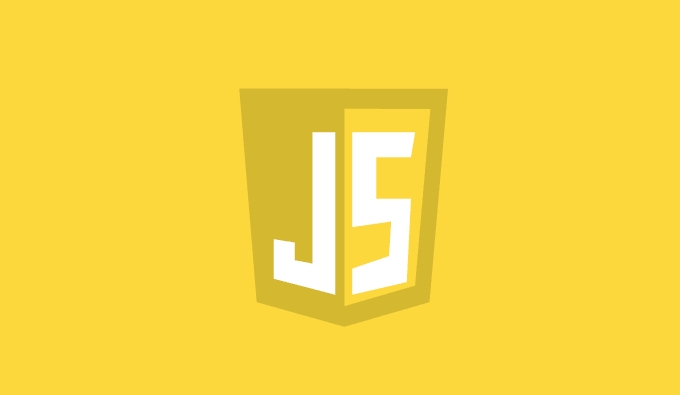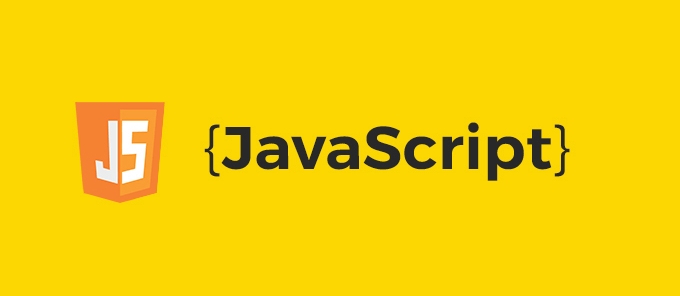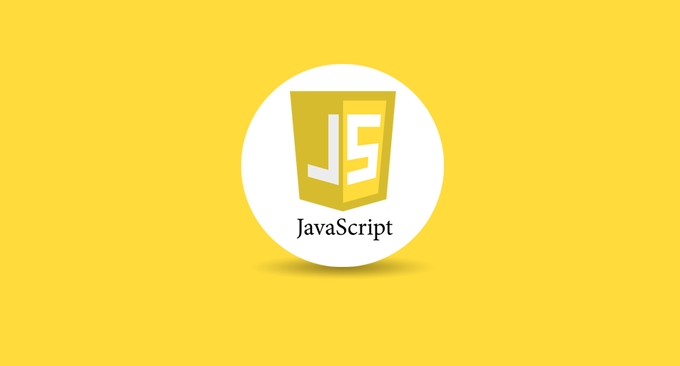Should I learn a js framework or master vanilla js first?
Jul 01, 2025 am 01:26 AMThe answer is: you should first master the native JavaScript and then learn the framework. Because frameworks are just tools, JS is the foundation. Not understanding JS will make it difficult to troubleshoot bugs and deal with interview questions; understanding native JS can help you better understand the design ideas of the framework; learning to be able to operate DOM, handle events, use Promise, understand this and prototype chains, and write simple interaction functions to start learning the framework; it is recommended to start with HTML CSS native JS first, learn while doing, read more documents, read less quick courses, and write projects by hand.

If you are a newcomer who is new to front-end development, you may be confused: Should you learn JavaScript frameworks (such as React, Vue) first or learn native JS first?

The answer is actually very direct: before formally entering the framework, it is very necessary to master native JavaScript.

But this "mastery" does not necessarily have to wait until you understand all the advanced concepts thoroughly, but to understand the core contents of basic grammar, DOM operations, event processing, and asynchronous programming. Otherwise, you will often get stuck when using the frame and don’t know what the problem is.
Why can't you skip native JS and learn the framework directly?
Many people think: "Now companies are using frameworks, why do I spend time learning native?" This idea makes sense, but ignores the essential problems:

Framework is just a tool, JS is the foundation
Whether you are using Vue, React or Angular, they are all JavaScript at the bottom. If you don't understand JS, it will be difficult to troubleshoot if you encounter bugs or complex logic.Many interview questions and practical questions are based on native JS
Common knowledge points such as closures, prototype chains, this pointing, and Promise can be taken in almost every middle and senior position. If you only know how to write components in the framework, you're likely to be asked.It will be easier for you to understand the design ideas of the framework
For example, React's useEffect and useState are actually an encapsulation of JS closures and functional programming. By understanding native JS, it will be easier for you to understand the mechanism behind it.
So how much can you start learning the framework?
You don't have to wait until you can write a complete project to be considered "mastered", but at least you should be able to:
- ? Understand the basic structures such as variable scope, functions, objects, etc.
- ? Can operate DOM and listen to events (such as clicks, input box changes)
- ? Can use Promise / async await to handle asynchronous requests
- ? Know the basic concepts of this and prototype chain (no need to be mastered)
- ? Write out simple interactive functions (such as form verification, dynamic addition and deletion of elements)
If you can do this, you can start to touch the framework. While learning the framework, continue to deepen your JS skills, this is a more realistic learning path.
Practical suggestions: How to arrange the learning order?
Get started with HTML CSS native JS
Understand basic syntax, DOM operations, and simple interactions, such as making a to-do list or weather query application.Learn while doing, without seeking to be in place
There is no need to learn all JS knowledge before starting the framework. For example, you can first learn how to write React's basic components, and find something you don't understand during the process and then go back to make up for the JS foundation.Read more documents and less "crash courses"
Many "Learn React in Three Hours" courses will make you think you understand, but in fact you are just drawing pictures. It’s better to take some time to read the official documents carefully, even if it’s a little slower, it’s more solid.Writing things by hand is more important than reading tutorials
Whether it is native JS or frameworks, just watching without practicing means not learning. Try to write a few small projects, such as account books, search boxes, carousel pictures, etc., which can help you truly understand and remember.
Let's summarize
Instead of worrying about "learning which one is the first to plan: first master the native JS that supports you to get started with the framework, and then continuously consolidate the JS foundation in actual combat.
Basically that's it.
The above is the detailed content of Should I learn a js framework or master vanilla js first?. For more information, please follow other related articles on the PHP Chinese website!

Hot AI Tools

Undress AI Tool
Undress images for free

Undresser.AI Undress
AI-powered app for creating realistic nude photos

AI Clothes Remover
Online AI tool for removing clothes from photos.

Clothoff.io
AI clothes remover

Video Face Swap
Swap faces in any video effortlessly with our completely free AI face swap tool!

Hot Article

Hot Tools

Notepad++7.3.1
Easy-to-use and free code editor

SublimeText3 Chinese version
Chinese version, very easy to use

Zend Studio 13.0.1
Powerful PHP integrated development environment

Dreamweaver CS6
Visual web development tools

SublimeText3 Mac version
God-level code editing software (SublimeText3)
 How does garbage collection work in JavaScript?
Jul 04, 2025 am 12:42 AM
How does garbage collection work in JavaScript?
Jul 04, 2025 am 12:42 AM
JavaScript's garbage collection mechanism automatically manages memory through a tag-clearing algorithm to reduce the risk of memory leakage. The engine traverses and marks the active object from the root object, and unmarked is treated as garbage and cleared. For example, when the object is no longer referenced (such as setting the variable to null), it will be released in the next round of recycling. Common causes of memory leaks include: ① Uncleared timers or event listeners; ② References to external variables in closures; ③ Global variables continue to hold a large amount of data. The V8 engine optimizes recycling efficiency through strategies such as generational recycling, incremental marking, parallel/concurrent recycling, and reduces the main thread blocking time. During development, unnecessary global references should be avoided and object associations should be promptly decorated to improve performance and stability.
 How to make an HTTP request in Node.js?
Jul 13, 2025 am 02:18 AM
How to make an HTTP request in Node.js?
Jul 13, 2025 am 02:18 AM
There are three common ways to initiate HTTP requests in Node.js: use built-in modules, axios, and node-fetch. 1. Use the built-in http/https module without dependencies, which is suitable for basic scenarios, but requires manual processing of data stitching and error monitoring, such as using https.get() to obtain data or send POST requests through .write(); 2.axios is a third-party library based on Promise. It has concise syntax and powerful functions, supports async/await, automatic JSON conversion, interceptor, etc. It is recommended to simplify asynchronous request operations; 3.node-fetch provides a style similar to browser fetch, based on Promise and simple syntax
 JavaScript Data Types: Primitive vs Reference
Jul 13, 2025 am 02:43 AM
JavaScript Data Types: Primitive vs Reference
Jul 13, 2025 am 02:43 AM
JavaScript data types are divided into primitive types and reference types. Primitive types include string, number, boolean, null, undefined, and symbol. The values are immutable and copies are copied when assigning values, so they do not affect each other; reference types such as objects, arrays and functions store memory addresses, and variables pointing to the same object will affect each other. Typeof and instanceof can be used to determine types, but pay attention to the historical issues of typeofnull. Understanding these two types of differences can help write more stable and reliable code.
 React vs Angular vs Vue: which js framework is best?
Jul 05, 2025 am 02:24 AM
React vs Angular vs Vue: which js framework is best?
Jul 05, 2025 am 02:24 AM
Which JavaScript framework is the best choice? The answer is to choose the most suitable one according to your needs. 1.React is flexible and free, suitable for medium and large projects that require high customization and team architecture capabilities; 2. Angular provides complete solutions, suitable for enterprise-level applications and long-term maintenance; 3. Vue is easy to use, suitable for small and medium-sized projects or rapid development. In addition, whether there is an existing technology stack, team size, project life cycle and whether SSR is needed are also important factors in choosing a framework. In short, there is no absolutely the best framework, the best choice is the one that suits your needs.
 JavaScript time object, someone builds an eactexe, faster website on Google Chrome, etc.
Jul 08, 2025 pm 02:27 PM
JavaScript time object, someone builds an eactexe, faster website on Google Chrome, etc.
Jul 08, 2025 pm 02:27 PM
Hello, JavaScript developers! Welcome to this week's JavaScript news! This week we will focus on: Oracle's trademark dispute with Deno, new JavaScript time objects are supported by browsers, Google Chrome updates, and some powerful developer tools. Let's get started! Oracle's trademark dispute with Deno Oracle's attempt to register a "JavaScript" trademark has caused controversy. Ryan Dahl, the creator of Node.js and Deno, has filed a petition to cancel the trademark, and he believes that JavaScript is an open standard and should not be used by Oracle
 Understanding Immediately Invoked Function Expressions (IIFE) in JavaScript
Jul 04, 2025 am 02:42 AM
Understanding Immediately Invoked Function Expressions (IIFE) in JavaScript
Jul 04, 2025 am 02:42 AM
IIFE (ImmediatelyInvokedFunctionExpression) is a function expression executed immediately after definition, used to isolate variables and avoid contaminating global scope. It is called by wrapping the function in parentheses to make it an expression and a pair of brackets immediately followed by it, such as (function(){/code/})();. Its core uses include: 1. Avoid variable conflicts and prevent duplication of naming between multiple scripts; 2. Create a private scope to make the internal variables invisible; 3. Modular code to facilitate initialization without exposing too many variables. Common writing methods include versions passed with parameters and versions of ES6 arrow function, but note that expressions and ties must be used.
 Handling Promises: Chaining, Error Handling, and Promise Combinators in JavaScript
Jul 08, 2025 am 02:40 AM
Handling Promises: Chaining, Error Handling, and Promise Combinators in JavaScript
Jul 08, 2025 am 02:40 AM
Promise is the core mechanism for handling asynchronous operations in JavaScript. Understanding chain calls, error handling and combiners is the key to mastering their applications. 1. The chain call returns a new Promise through .then() to realize asynchronous process concatenation. Each .then() receives the previous result and can return a value or a Promise; 2. Error handling should use .catch() to catch exceptions to avoid silent failures, and can return the default value in catch to continue the process; 3. Combinators such as Promise.all() (successfully successful only after all success), Promise.race() (the first completion is returned) and Promise.allSettled() (waiting for all completions)
 What is the cache API and how is it used with Service Workers?
Jul 08, 2025 am 02:43 AM
What is the cache API and how is it used with Service Workers?
Jul 08, 2025 am 02:43 AM
CacheAPI is a tool provided by the browser to cache network requests, which is often used in conjunction with ServiceWorker to improve website performance and offline experience. 1. It allows developers to manually store resources such as scripts, style sheets, pictures, etc.; 2. It can match cache responses according to requests; 3. It supports deleting specific caches or clearing the entire cache; 4. It can implement cache priority or network priority strategies through ServiceWorker listening to fetch events; 5. It is often used for offline support, speed up repeated access speed, preloading key resources and background update content; 6. When using it, you need to pay attention to cache version control, storage restrictions and the difference from HTTP caching mechanism.






